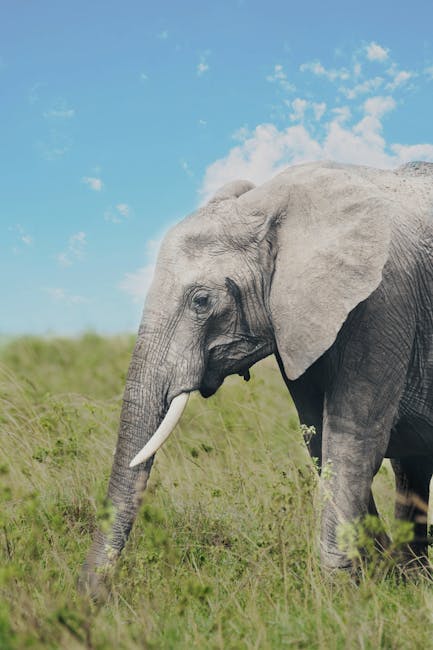African elephants are the largest animals walking on earth Their herds wander through 37 countries in Africa They are easily recognized by their trunk that is used for communication and handling objects and their large ears allow them to radiate excess heat upper incisor teeth develop into tusks in African elephants and grow throughout their lifetime there are two species of African elephants, the savannah and forest elephant Savannah elephants are larger than forest elephants and their tusks curve outwards In addition to being smaller, forest elephants are darker and their tusks are straighter and point downward there are also differences in the size and shape of the skull and skeleton between the two species The presence of African elephants helps to maintain suitable habitats for many other species In central African forests, up to 30 tree species may require elephants to help with dispersal and germination They play a pivotal role in shaping their habitat because of the enormous impact they have on factors ranging from freshwater to forest cover African elephants are keystone species, meaning they play a critical role in their ecosystem also known as "ecosystem engineers" elephants shape their habitat in many ways During the dry season, they use their tusks to dig up dry riverbeds and create watering holes many animals can drink from Their dung is full of seeds, helping plants spread across the environment and it makes a pretty good habitat for dung beetles too In the forest, their feasting on trees and shrubs creates pathways for smaller animals to move through an elephant's trunk is actually a long nose used for smelling, breathing, trumpeting, drinking and also for grabbing things, especially a potential meal The trunk alone contains about 40.000 muscles African elephants have two finger-like features on the end of their trunk, that they can use to grab small items Both male and female African elephants have tusks, which are continuously growing teeth Savannah elephants have curving tusks, while the tusks of forest elephants are straight they use these tusks to dig for food and water and strip bark from trees males, whose tusks tend to be larger than females also, use their tusks to battle one another elephants are matriarchal, meaning they live in female lead groups the matriarch is usually the biggest and oldest she presides over a multi-generational herd that includes other females, called cows, and their young Adult males, called bulls, tend to roam on their own, sometimes forming smaller, more loosely associated all-male groups having a baby elephant is a serious commitment elephants have a longer pregnancy than any other mammal, almost 22 months At birth, elephants already weigh some 200 pounds and stand about three feet tall African elephants are also losing their habitat as the human population grows and people convert land for agriculture and development elephants need a lot of room so habitat destruction and fragmentation not only makes it harder for them to find food, water, and each other but it also puts them in increased conflict with humans African elephants are protected to varying degrees in all the countries of their geographic range they're also protected under international environmental agreements, conservation groups and governments have worked to set aside land for wildlife including corridors that connect those protected lands Still, researchers believe that up to 70% of elephants range is on unprotected land On the supply side, protecting elephants from poaching also requires a local approach helping communities develop sustainable livelihoods could reduce the lure of poaching Thanks for your kindness to us

https://howtoplaythedjembedrums.com/hewan-terbesar-yang-berjalan-di-muka-bumi-gajah-afrika/

No comments:
Post a Comment